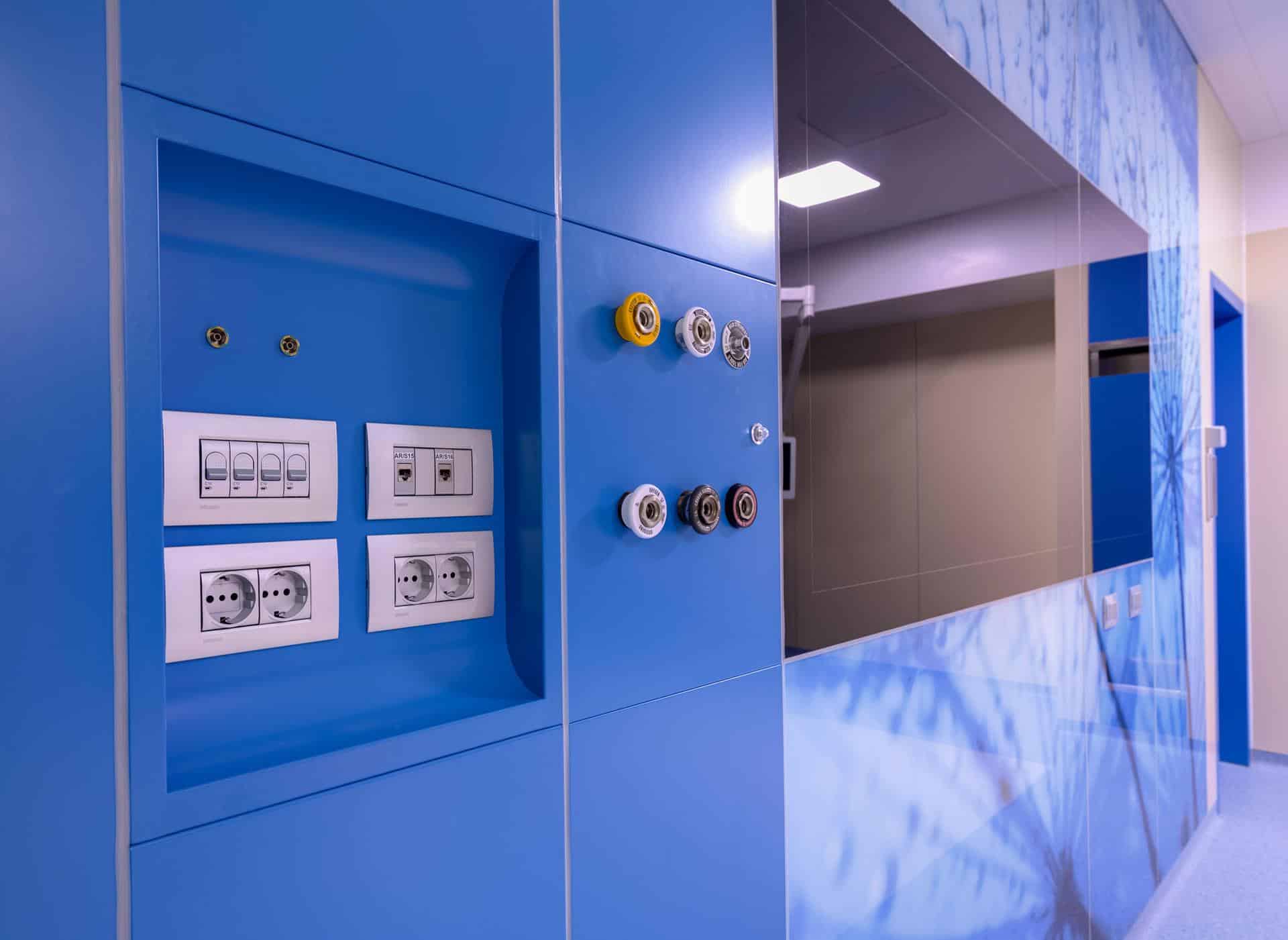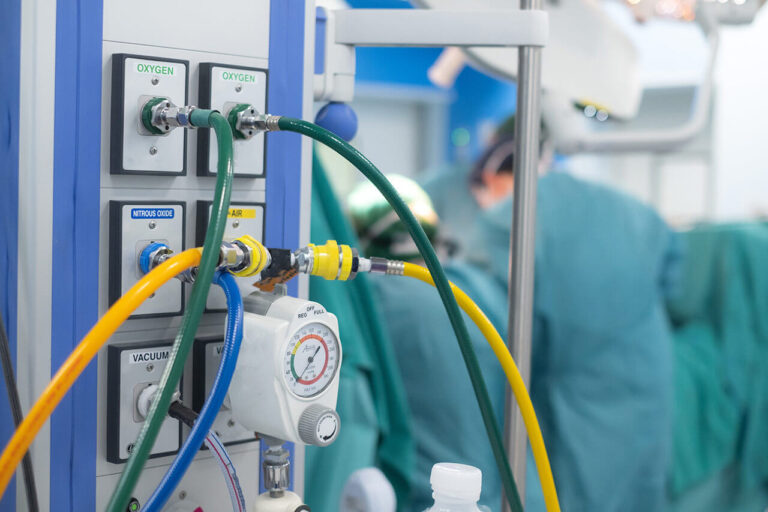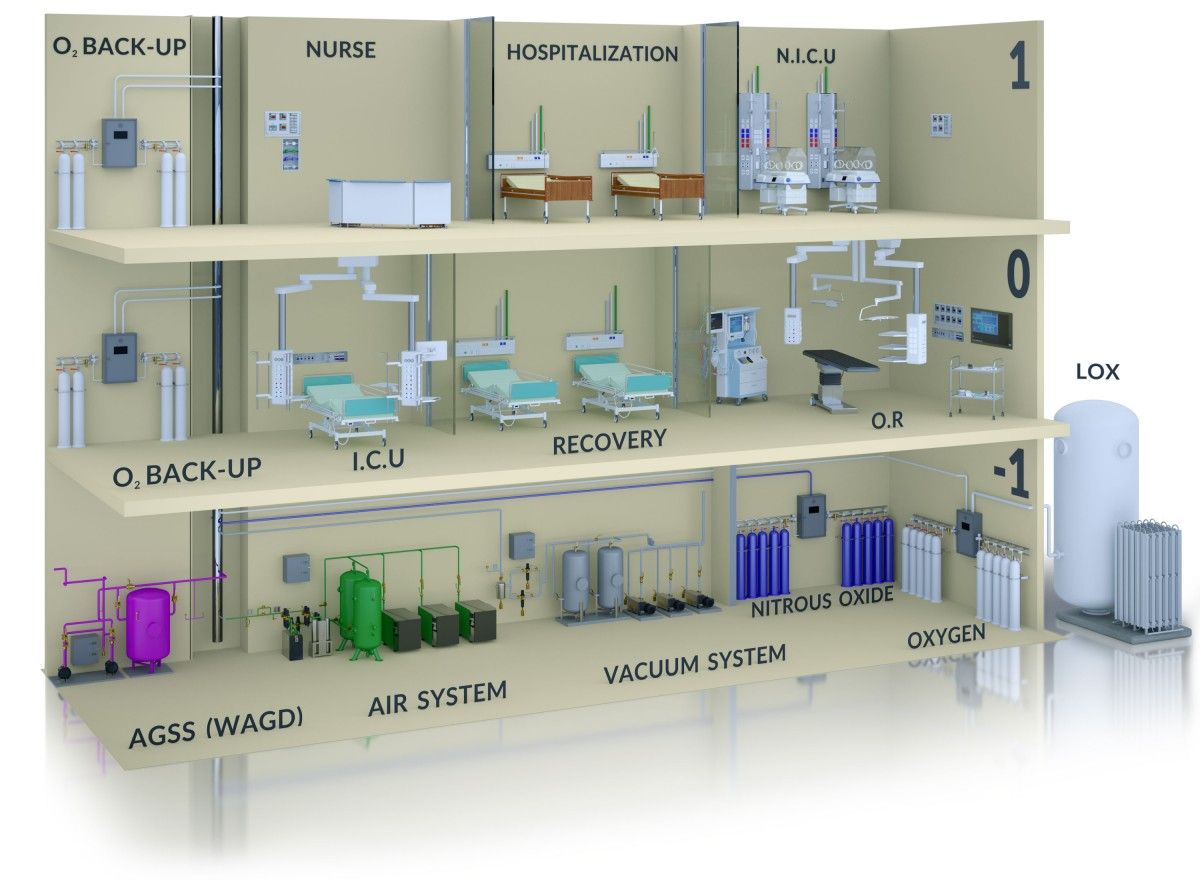The Medical Gas Pipeline System (MGPS) is a critical infrastructure in modern hospitals, ensuring the safe, reliable, and continuous supply of medical gases to different areas of the facility. It supports Patient care, Surgical procedures and Life-support systems by distributing essential gases such as:
- Medical Oxygen (via Oxygen Generator System)
- Medical Vacuum (Suction System)
- Medical Air (Compressed Air System)
- Nitrous Oxide (N₂O)
- Nitrogen
- Carbon Dioxide (CO₂)


Advantages of Using a Medical Gas Pipeline System in Hospitals
Medical Gas Pipeline Systems (MGPS) offer several advantages over conventional gas cylinders, making them the preferred choice for modern healthcare facilities:
- Enhanced Safety: Centralized pipelines minimize the risks of cylinder handling, accidental leaks, and improper gas delivery.
- Improved Efficiency: Gases are readily available through terminal units, streamlining workflows in critical areas such as OTs, ICUs and emergency departments.
- Cost Savings: Though initial setup requires investment, MGPS reduces recurring costs associated with manual handling, transport and storage of cylinders.
- Space Optimization: Eliminates bulky cylinder storage, freeing up valuable hospital space for patient care and medical equipment.
Applications of Medical Gas Pipeline Systems
MGPS play a vital role in ensuring uninterrupted supply of life-supporting gases across different hospital departments:
- Operating Rooms: Continuous supply of oxygen, nitrous oxide and anesthesia gases for safe and efficient surgical procedures.
- Intensive Care Units (ICUs): Reliable delivery of oxygen, medical air and vacuum systems to support critically ill patients.
- Emergency Rooms: Immediate access to oxygen and other essential gases for rapid patient stabilization.
- Neonatal Care Units (NICUs): Controlled oxygen therapy to protect premature and newborn infants with delicate respiratory needs.
By supporting these critical areas, MGPS ensures safe, efficient and high-quality patient care throughout the hospital.


